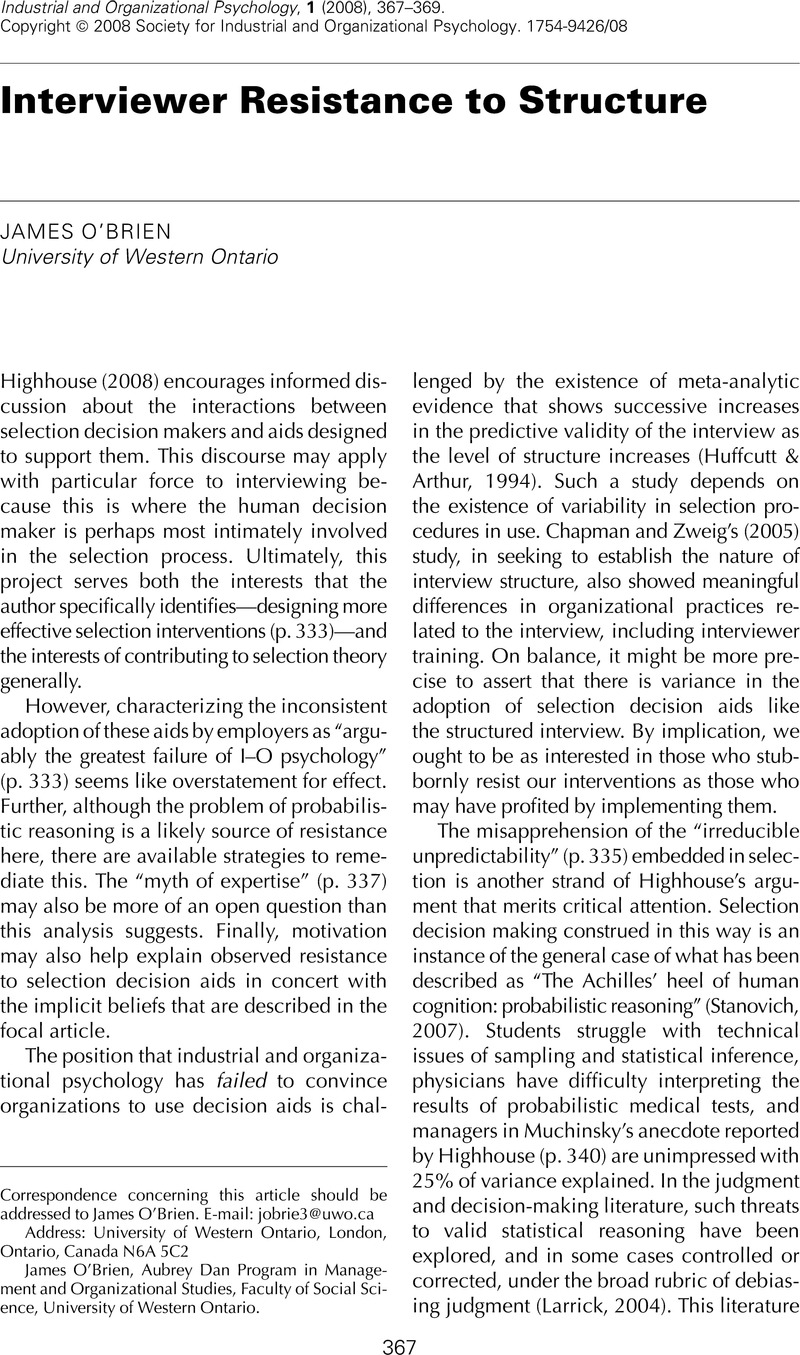Crossref Citations
This article has been cited by the following publications. This list is generated based on data provided by Crossref.
Highhouse, Scott
2008.
Facts Are Stubborn Things.
Industrial and Organizational Psychology,
Vol. 1,
Issue. 3,
p.
373.
O'Brien, James
and
Rothstein, Mitchell G.
2011.
Leniency: Hidden Threat to Large-Scale, Interview-Based Selection Systems.
Military Psychology,
Vol. 23,
Issue. 6,
p.
601.
Miles, Andrew
and
Sadler-Smith, Eugene
2014.
“With recruitment I always feel I need to listen to my gut”: the role of intuition in employee selection.
Personnel Review,
Vol. 43,
Issue. 4,
p.
606.
Ryan, Ann Marie
and
Ployhart, Robert E.
2014.
A Century of Selection.
Annual Review of Psychology,
Vol. 65,
Issue. 1,
p.
693.
Zhang, Don C.
Highhouse, Scott
Brooks, Margaret E.
and
Zhang, Yuyan
2018.
Communicating the validity of structured job interviews with graphical visual aids.
International Journal of Selection and Assessment,
Vol. 26,
Issue. 2-4,
p.
93.
Burton, Jason W.
Stein, Mari‐Klara
and
Jensen, Tina Blegind
2020.
A systematic review of algorithm aversion in augmented decision making.
Journal of Behavioral Decision Making,
Vol. 33,
Issue. 2,
p.
220.



